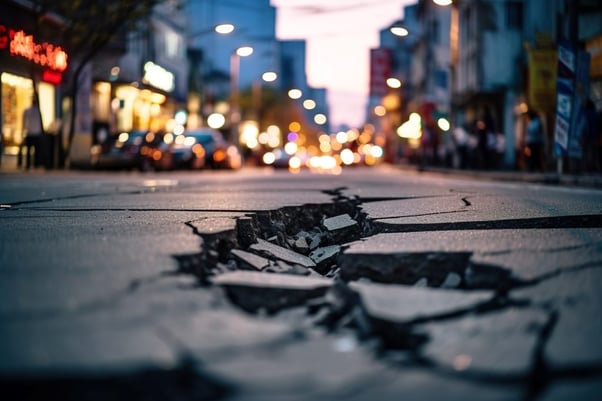Functional recovery in the context of earthquakes refers to the ability of a building, infrastructure, or community to quickly regain its essential functions and services after being impacted by an earthquake. It involves restoring physical structures and ensuring that the necessary systems, utilities, and functions are operational to support the needs of occupants and the surrounding community. Functional recovery aims to minimize downtime, disruptions, and the long-term economic and social impacts of seismic events.

Paying attention to Functional Recovery makes a lot of sense if you are an organization that needs to be operational soon after an earthquake. For example, hospitals, emergency services, government, aged care facilities, airports. When you consider that the central business district of Christchurch (New Zealand) was closed to the public for 27 months following the 2010-2011 earthquakes, it's hard to imagine any organization that could tolerate that level of disruption.
Some innovative architects and engineers are already taking into account Functional Recovery in their building designs. However, the majority of buildings are built to Code which ensures the building will not collapse ('life safety') rather than being quick to recover. California lawmakers have proposed a bill, AB-1329, which would force consideration of Functional Recovery into the building code. Regardless of whether it passes or not, moves are afoot to introduce Functional Recovery into the next update of the International (US) Building Code. Others will surely follow suit.
Why does Functional Recovery matter?
Here are ten reasons why building owners and occupants in high seismic regions should consider the ability of their building to functionally recover after an earthquake:
- Occupant Safety: Buildings that can functionally recover provide a safer environment for occupants, reducing the risk of injury or loss of life during and after an earthquake.
- Business Continuity: For commercial properties, functional recovery means faster resumption of business operations, minimizing financial losses due to downtime and disruption.
- Emergency Services: A building that can recover quickly can provide a base for emergency services, aiding rescue and relief efforts in the aftermath of an earthquake
- Essential Services: Functional recovery ensures that essential services such as water, electricity, communication, and sanitation are restored promptly, supporting the needs of occupants and the community.
- Community Support: A building capable of functional recovery can serve as a hub for community support, offering shelter, medical assistance, and resources to those affected by the earthquake.
- Infrastructure Lifespan: Implementing measures for functional recovery can extend the lifespan of the building and its infrastructure by preventing extensive damage and reducing the need for costly repairs.
- Insurance Premiums: Buildings with better functional recovery capabilities may qualify for lower insurance premiums, as insurers recognize reduced risk and potential for quicker recovery.
- Regulatory Compliance: Many jurisdictions have building codes and regulations that emphasize functional recovery as a key aspect of seismic resilience, and compliance can ensure long-term viability.
- Property Value: A building that is resilient and can recover quickly from earthquakes tends to hold its value better than structures that are more vulnerable to damage.
- Social Stability: By facilitating faster recovery and reducing the socio-economic impacts of earthquakes, functional recovery contributes to maintaining social stability and community well-being.
Investing in measures to enhance functional recovery not only minimizes the immediate impacts of earthquakes but also supports long-term sustainability and resilience, making it a crucial consideration for building owners and occupants in high seismic regions.
 Tectonus is expert at designing important buildings able to recovery quickly after a seismic event.
Tectonus is expert at designing important buildings able to recovery quickly after a seismic event.
What next?
While regulatory changes will take time, smart operators aren't leaving things to chance. Tectonus is working with engineers and clients to deliver buildings with next-level seismic resilience. By designing for reduced damage and downtime to their buildings these clients are future-proofing their investment and ensuring that when the worst happens they will have taken all reasonable steps to safeguard their people, their organizations and their communities.
To learn more about functional recovery and enhanced seismic resilience, please get in touch.
